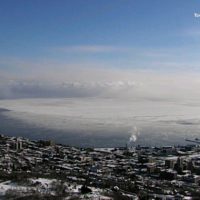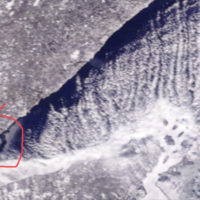I never felt wind was good for making ice, even on small lakes. This is the 1st year I closely watched the ice formation on Lake Superior so forgive me if I’m not correct – but I have to think on a water body the size of superior, high winds aren’t conducive to ice formation.
I’ve watched it pretty closely from afar for about 4 years now. I’ve never seen walkable ice in Duluth before mid January. Obviously the reason being is because it is holding too much heat energy to freeze.
We all should be aware that moving air has an exponential ability to absorb and sweep away heat energy. With such a large mass of heat energy, it can only help to cool the water. Making ice is a whole different story.
Lake Superior, like any other lake at this point (right before freeze up) will gradually warm as you go deeper until you reach it’s densest temp, 39F at the bottom.
In the warm months when the water temp is cooler than the air, you’ll see warming at the top of the water column and the wind will blow that warm water all over the lake. On the upwind side of the lake, you’ll see the coolest surface water because it’s being pulled up from below.
I suspect this happens in reverse in the winter. The cooler water and ice get blown away while the warmer water is pulled up.
Just a theory but it makes sense in my head.
If you watch the satellite images and the tower cam, you can clearly see ice crystals forming on this side of the lake and see them getting blown offshore.
This lake puts on quite the spectacle if you care to pay enough attention.





